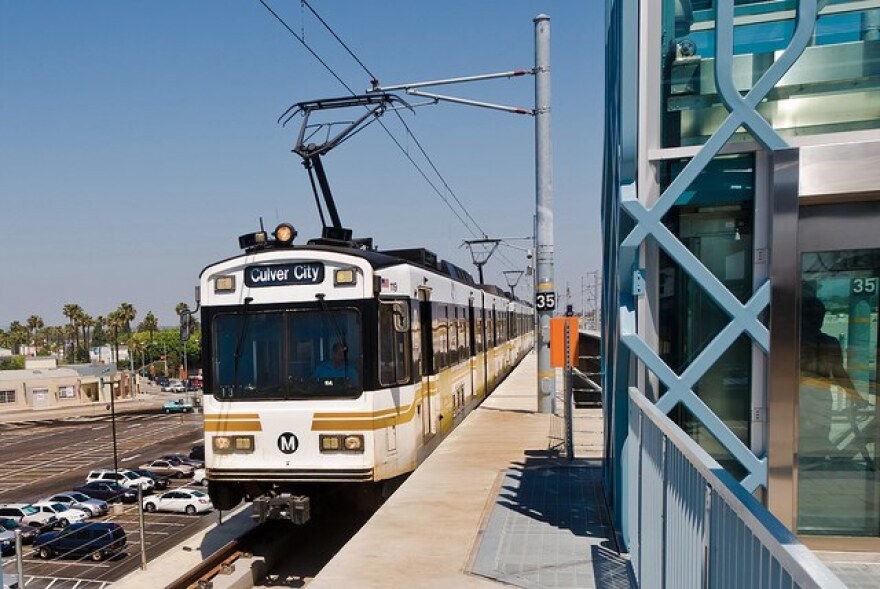Truth matters. Community matters. Your support makes both possible. LAist is one of the few places where news remains independent and free from political and corporate influence. Stand up for truth and for LAist. Make your year-end tax-deductible gift now.
This is an archival story that predates current editorial management.
This archival content was written, edited, and published prior to LAist's acquisition by its current owner, Southern California Public Radio ("SCPR"). Content, such as language choice and subject matter, in archival articles therefore may not align with SCPR's current editorial standards. To learn more about those standards and why we make this distinction, please click here.
Metro Has Spent Billions On Rail, But No One's Riding

Public transit ridership has been steadily declining for the last decade, despite billions of dollars of investment and vigorous efforts urging Angelenos to ditch their cars and "Go Metro."The Los Angeles County Metropolitan Transportation Authority, a.k.a. Metro, lost more than 10 percent of its riders from 2006 to 2015, reports the L.A. Times. The $9-billion investment in subway lines and light rails haven't made a dent in increasing ridership; in fact, according to the Times, ridership has been steadily declining over 30 years, and that was when Metro's train and light rail systems had yet to exist.
"It is a bit concerning that we're expanding the system at the same time ridership's declining," Juan Matute, associate director of UCLA's Institute of Transportation Studies, told SCPR. But, he continued, "It doesn't surprise me because it's completely in line with national trends."
So, what are these trends? There are a few factors. The recovering economy, low-ish gas prices, and the popularity and relative affordability of ridesharing services like Uber and Lyft have certainly made using public transit a less appealing option.
But this hasn't dissuaded Metro from their plans to spend more than $12 billion over the next decade which would be used to build two new rail lines and three extensions.
The Expo Line's Santa Monica extension should be ready by May. The expansion of Metro has already benefited a lot of people; and the Expo Line has already been a grand Metro success story. Still, it hasn't been enough.
"Less people are riding, period," Corinne Ralph, LADOT's head of transit operations told the Times. She said when her department and other local transit agencies met with Metro last month to discuss the decrease in ridership that it seemed to be "a major surprise to most transit operators.... No one really anticipated the severity of the decline."
Should we be surprised, though? For those of us carless-Angelenos who rely on Metro to get around, these kinds of messages are more common than not:
RED/PURPLE LINE: Up to 20 min delays due to disabled train near Union Sta. Follow announcements. pic.twitter.com/EtR86JEtjw
— LA Metro (@metrolosangeles) January 27, 2016
Whoever runs Metro's Twitter page is on top of it, though. They promptly respond to rider's questions (and complaints); though, there's only so much a social media manager can do. They can't make the buses come faster, or stop traffic from blocking the bus only lanes during rush hour.
@pharaohfawcett Hi, sorry for the late response. Are you still waiting on the 2? If so, pls let me know stop/dir so I can find next bus. ^LA
— LA Metro (@metrolosangeles) September 25, 2015
"We're not building for today," Phil Washington, Metro's chief executive, told the Times. "We're building for 100 years down the road."
That's all well and good, but it's a tough pill to swallow for those of us who'd like to see a more efficient Metro system in our lifetimes.







